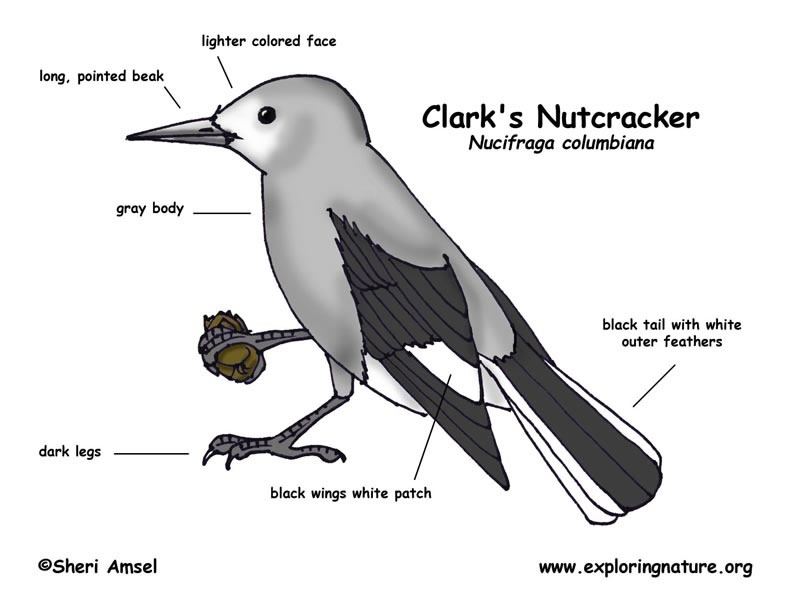

They are found west of the Rocky Mountains from Southern Canada south to New Mexico.
They live in high mountainous areas often in conifer forests at timberline (where trees give way to rocky summits).
They are gray with black wings and tail. They have white patched on the wings and white outer feathers on the tail. They have a big, pointed beak. They have dark eyes and legs. Their gray color is lighter around the face. They have a special pouch under their tongue where they can collect seeds to carry them away to the stash.
They crack open pinecones and remove the seeds. They hide many, many seeds and can find them later to eat. A large stash of seeds is kept to feed young. They have a loud crow-like call.
They eat pine seeds, insects and even dead animals (carrion).
Females lay about 3 eggs in a nest of twigs and bark. Both male and female take turns keeping the eggs warm (incubating). They often raise young very early in the season because they can feed them on their stored collection of pin seeds.
Domain: Eukarya
Kingdom: Animalia
Phylum: Chordata
Subphylum: Vetebrata
Class: Aves
Order: Passeriformes
Family: Corvidae
Genus: Nucifraga
Species: N. columbiana
When you research information you must cite the reference. Citing for websites is different from citing from books, magazines and periodicals. The style of citing shown here is from the MLA Style Citations (Modern Language Association).
When citing a WEBSITE the general format is as follows.
Author Last Name, First Name(s). "Title: Subtitle of Part of Web Page, if appropriate." Title: Subtitle: Section of Page if appropriate. Sponsoring/Publishing Agency, If Given. Additional significant descriptive information. Date of Electronic Publication or other Date, such as Last Updated. Day Month Year of access < URL >.
Amsel, Sheri. "Clark's Nutcracker" Exploring Nature Educational Resource ©2005-2024. December 14, 2024
< http://exploringnature.org/db/view/Clarks-Nutcracker >

